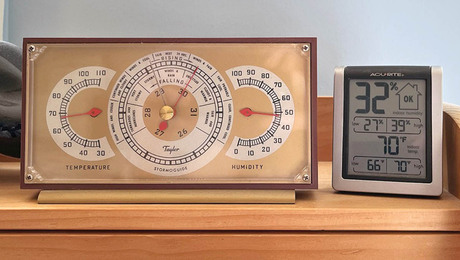Hi everyone,
I’m looking for ideas about fence post to concrete connections. Do you always have to bury the post in concrete?
I’m replacing four cedar fence posts for a customer and want to use some kind of steel connector between the post and concrete. It seems like all of the connectors in the Simpson catalog are NOT recommended for posts without a top load (they say don’t use any of their post base hardware for fences, in particular). The old posts came out of the holes pretty cleanly and I was able to dig about two feet down with my hand without removing the old concrete, which made the customer happy because she has an incredible backyard garden that, of course, is all along the fence and everywhere else (so the less disturbance the better). I’ve cleared enough space to place a metal connector of some sort in fresh concrete, but not enough to reset new posts and concrete. Also the customer likes the idea of recycling the old posts, which I could do with a connector because I could cut off the two feet that was buried in the ground and is now decaying and reuse the rest of the post.
Any ideas?
Thanks


















Replies
Here in Northern California I grew up with redwood fence posts but ones set ten years ago have rotted out while I find 100year old ones still rock solid. I attribute this to the decline in lumber quality and have resorted to using steel post bases.
I think I am using simpson bases. They look like a stirrup and take two 5/8" bolts. They have two types, one with a standoff and the other with a flat steel base. I don't much care which I use -- I just mound up the concrete to compensate for those lacking the 1" standoff.
I worried me a bit that they only extend a foot or so into the concrete so I weld a 2' length of #4 rebar to either side and dig my post hole as close to 3' as I can get.
It is definitely more time consuming than just setting the post in concrete with the handling of the rebar, welding, drilling 5/8" holes, etc. but the posts should last much longer and replacement is a breeze. You may have to tighten up the bolts a few times to compensate for shrinking posts.
I typically use auger bits for drilling large bore holes in wood but the post bases tear up self feed auger bits pretty quick so I try to keep a 5/8 metal bit around and drill half way through one side and finish drilling from the other side to make sure it all lines up ok.
I am no engineer but my 12' high trellis sets on 4x6's bolted to steel bases with rebar extensions and I haven't had any problems so far.
Good luck,
Karl
I plan to do something similar with my neighbor's fence (bordering on my yard) in the near future. In the past, I've used really heavy-duty post holders that cost about $7 apiece from HD (setting them in concrete formed in Sonotubes). They have two steel straps that come up about 8 inches on either side of the post. The post is held in place with two 1/2 in. carriage bolts. There's a 1/2 inch thick plate on bottom to keep the post off the concrete, and the two steel straps extend down into the concrete about a foot. These have worked just fine for me. My other neighbor used a much lighter post holder, costing about $1-2 each, on his fence, and the first time the wind blew, the whole thing listed over about 30 degrees and stayed there! His brand new fence is now buttressed at regular intervals!
Edited 5/4/2003 5:18:33 PM ET by CHEAKAMUS
Concrete pour a sturdy length of galvanized 3" flat bar in the hole and bolt the cedar post to it. If you want set 2 of them for either side. If the post at fault is a corner post, use a 3x3 metal angle.
Turtleneck
Its not a smile- its a cramp
Turtleneck's got it.
SamT